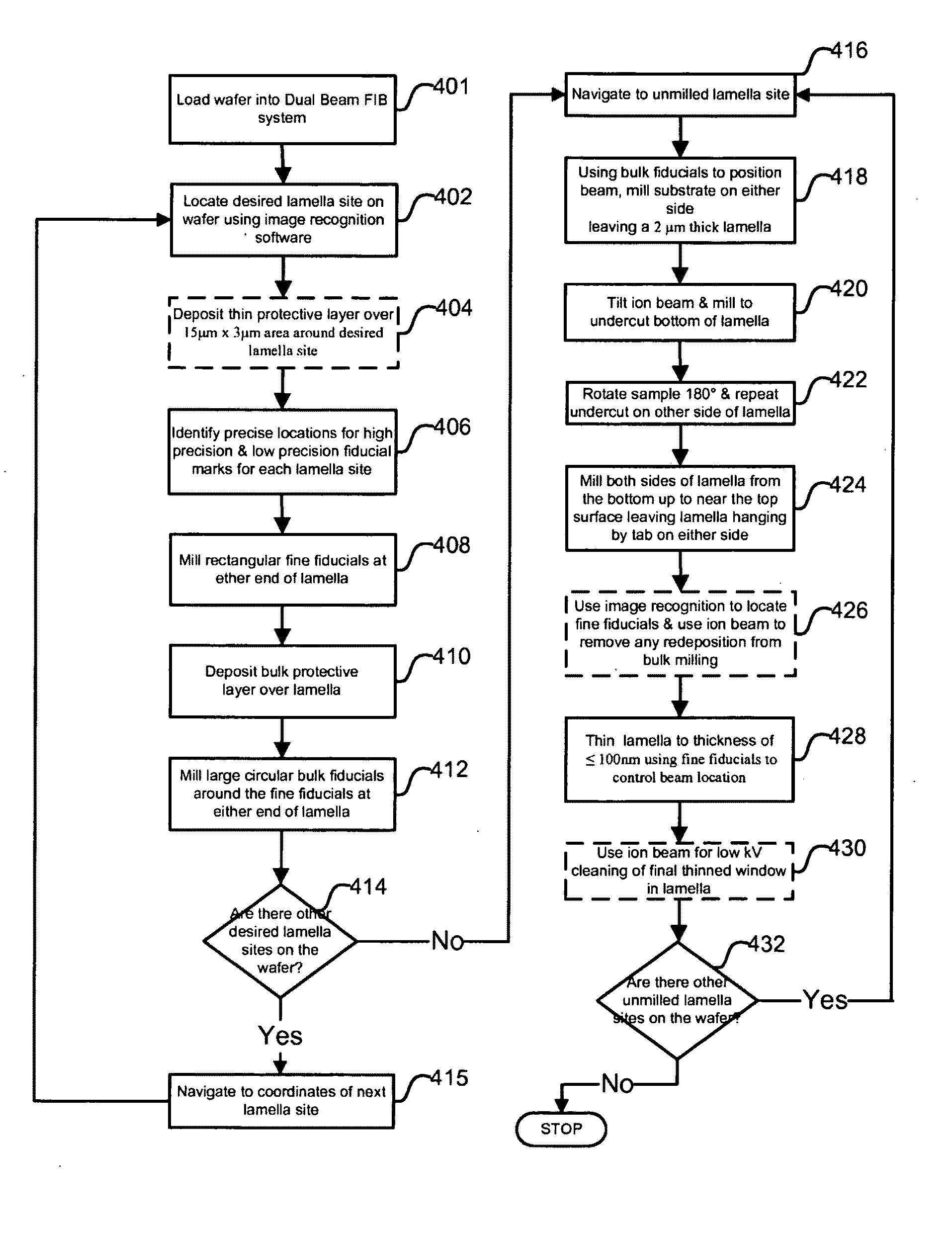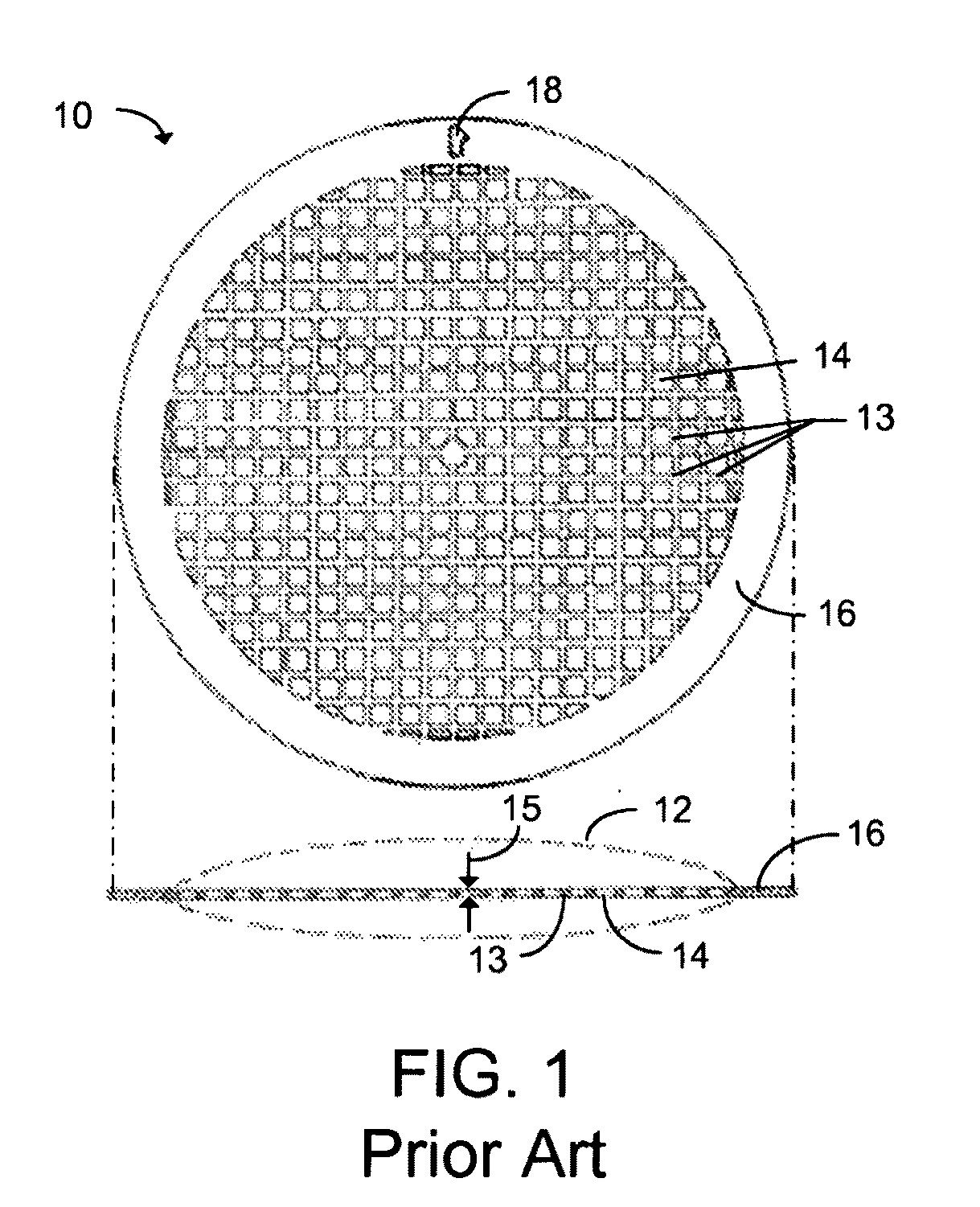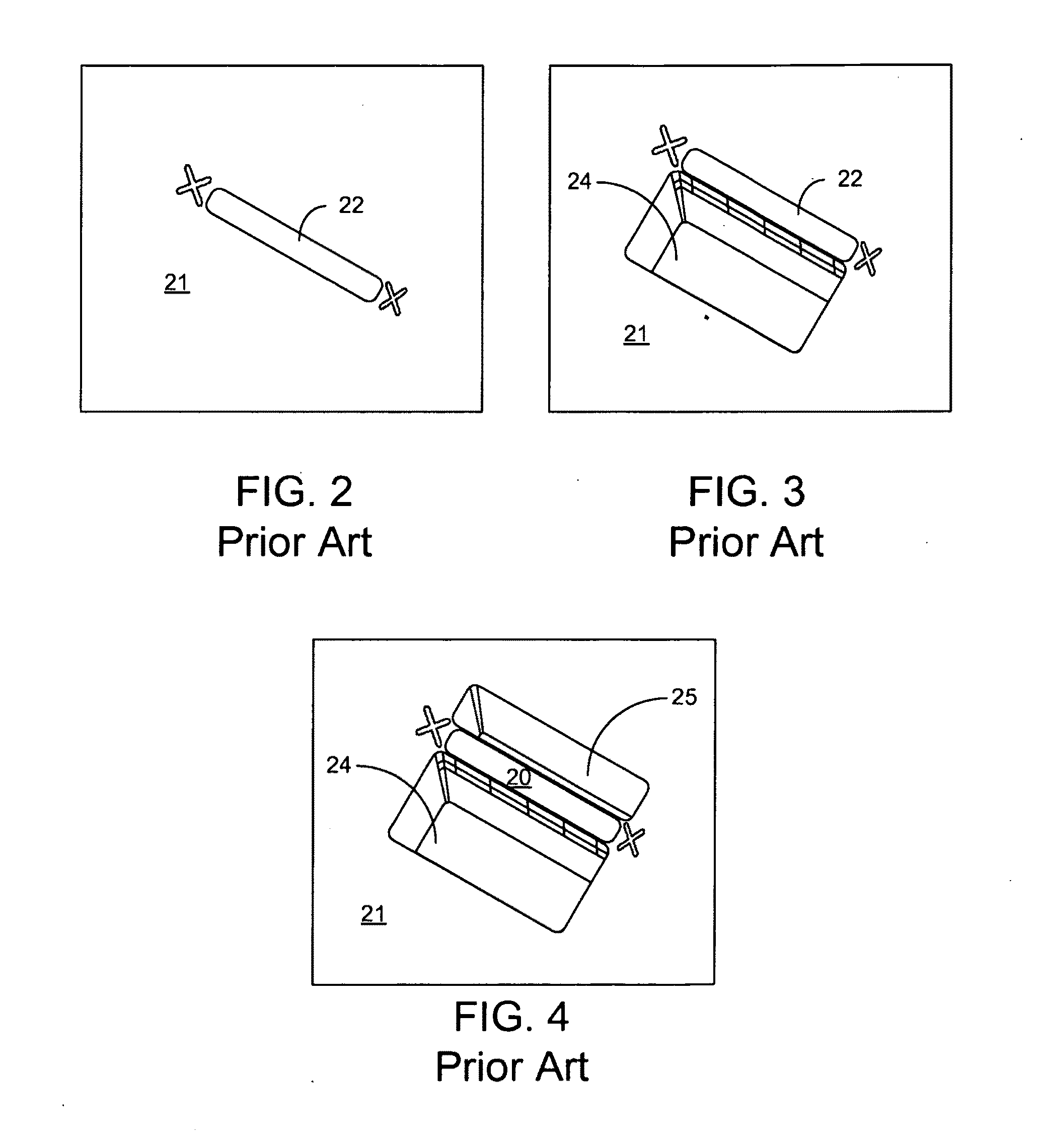Method for creating s/tem sample and sample structure
a technology of transmission electron microscope and sample structure, which is applied in the direction of material analysis using wave/particle radiation, instruments, and therapies, etc., can solve the problems of destroying much affecting the quality of the original sample, and the size of the feature to be measured, so as to increase the throughput and reproducibility of tem analysis, and the process of creating and analysing tem samples is less labor-intensive.
- Summary
- Abstract
- Description
- Claims
- Application Information
AI Technical Summary
Benefits of technology
Problems solved by technology
Method used
Image
Examples
Embodiment Construction
[0041]Preferred embodiments of the present invention provide improved methods for lamella creation. A preferred embodiment can create S / TEM samples with a thickness in the 50-100 nm range for the purposes of S / TEM metrology with minimal site-to-site variation. The process can produce a 10 μm wideט5 μm deepט500 nm thick lamella with a final-thinned window of 3 μm×3 μm at the targeted final thickness (50-100 nm). S / TEM samples produced according to the present invention will not suffer from bowing phenomenon when thinned to 100 nm or less and are robust enough to survive automated extraction and mounting.
[0042]A preferred method or apparatus of the present invention has many novel aspects, and because the invention can be embodied in different methods or apparatuses for different purposes, not every aspect need be present in every embodiment. Moreover, many of the aspects of the described embodiments may be separately patentable.
[0043]Current TEM lamella creation processes for FIB s...
PUM
| Property | Measurement | Unit |
|---|---|---|
| thick | aaaaa | aaaaa |
| thick | aaaaa | aaaaa |
| thick | aaaaa | aaaaa |
Abstract
Description
Claims
Application Information
 Login to View More
Login to View More - R&D
- Intellectual Property
- Life Sciences
- Materials
- Tech Scout
- Unparalleled Data Quality
- Higher Quality Content
- 60% Fewer Hallucinations
Browse by: Latest US Patents, China's latest patents, Technical Efficacy Thesaurus, Application Domain, Technology Topic, Popular Technical Reports.
© 2025 PatSnap. All rights reserved.Legal|Privacy policy|Modern Slavery Act Transparency Statement|Sitemap|About US| Contact US: help@patsnap.com



